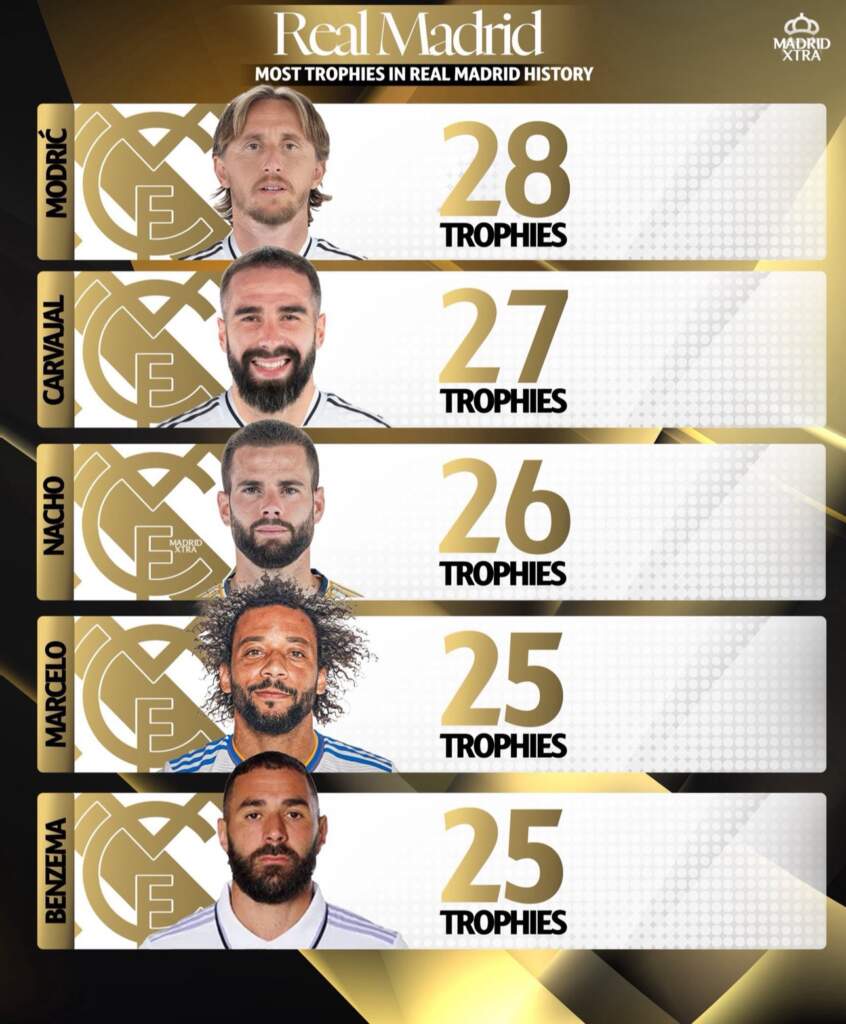Luka Modrić has officially announced his exit from Real Madrid. His last home match comes on May 24, 2025, against Real Sociedad. The football world prepares to say goodbye.
Biography and career
Born on September 9, 1985, in Zadar, Croatia, Modrić grew up during the Croatian War of Independence. His family became refugees. Despite challenges, he remained focused on football.
He joined Dinamo Zagreb in 2003. Loan spells at Zrinjski Mostar and Inter Zaprešić gave him early career experience. He impressed with goals, assists, and maturity on the ball.
In 2008, Tottenham Hotspur signed him for £16.5 million. Over four seasons, he made 127 appearances and helped them qualify for the UEFA Champions League in 2010.

Real Madrid secured his signature in 2012 for £30 million. It was a turning point. Modrić spent 13 years there, played 590 matches, and won 28 major trophies.
Scoring 43 goals in Madrid colors, he1 lifted six UEFA Champions League titles, four La Liga trophies, and became Real Madrid’s most decorated player in history.
Modrić consistently renewed his contract, accepting lower wages to remain with the team. In 2024–25, he made 23 starts and 25 substitute appearances, still influencing games.
Modrić made his international debut for Croatia in 2006. He captained the national team to the 2018 World Cup final and a third-place finish in 2022.
Awards, recognition, and style of play
Luka earned the Golden Ball in 2018 and the Bronze Ball in 2022. As of March 2025, he has 186 caps and 27 international goals to his name.
His playing style is defined by vision, accuracy, and discipline. He controls midfield play with short and long passes, strong positioning, and a high work rate.
The Croatian international is known for the trivela pass, long-range shots, and efficiency during set pieces. His technical ability and football intelligence are widely respected by peers and managers.
He posted high stats throughout his career. In the 2010–11 Premier League, he averaged 62.5 passes per match and 87.4% pass accuracy. He also recorded 2.5 interceptions per game.
In the 2013–14 La Liga season, he completed 90% of his passes and had the most ball recoveries for Real Madrid. His role in the midfield was crucial.
The Madristar’s departure came after Madrid shifted focus to younger midfielders—Tchouaméni, Valverde, Bellingham, and Camavinga. The club’s long-term plan favored a more physical, fast-paced engine room.
Next move?
Confirming his exit on Instagram on May 22, 2025, he may feature in the FIFA Club World Cup in the United States from June 14 to July 13.
As his next move is undecided, Dinamo Zagreb offers Champions League football and the chance to return home before the 2026 World Cup. It holds sentimental value.
Al Nassr in Saudi Arabia could offer a big deal and possibly reunite him with Cristiano Ronaldo. The club seeks to win its first league title since 2019.
New York City FC is another option. They need a playmaker to boost their MLS Cup chances. Modrić fits the role, though Inter Miami seems unlikely.
Deciding his next move within days, key factors include playing time, competitive level, and physical readiness—not just financial incentives. Retirement is expected after the 2026 season.
Regarded as one of the best midfielders in football history, he won the Ballon d’Or in 2018 and was named FIFA’s Best Men’s Player the same year.
Earning six selections to the FIFPRO World 11 and three UEFA Team of the Year nods, coaches like Mourinho, Zidane, and Ancelotti praised his influence.
Major successes of Modrić brought global recognition to Croatian football. He’s often compared to greats like Pirlo, Xavi, Iniesta, and Scholes. His career is a benchmark for aspiring midfielders.
As his departure closes a golden chapter in Real Madrid’s history, his journey from adversity to global stardom is both inspiring and unforgettable.
Legend Modrić gave everything to the sport—with discipline, humility, and consistent quality. As he prepares for his final season, he leaves a legacy that will endure for generations.